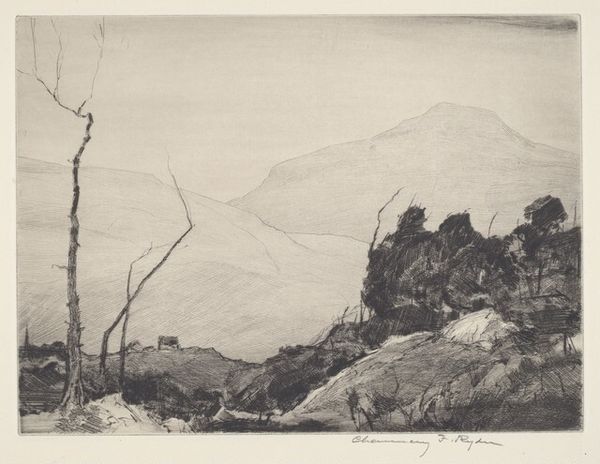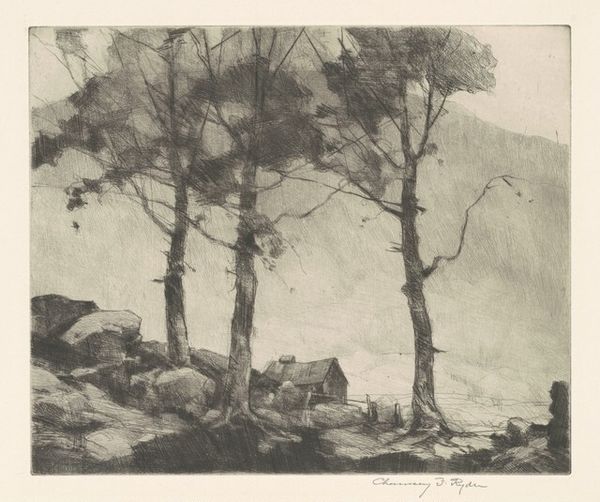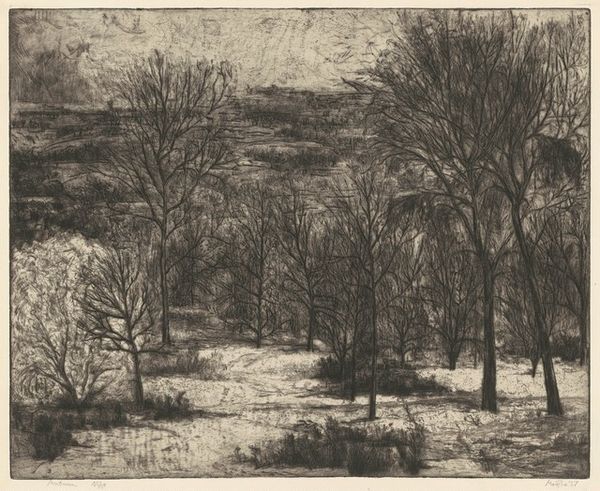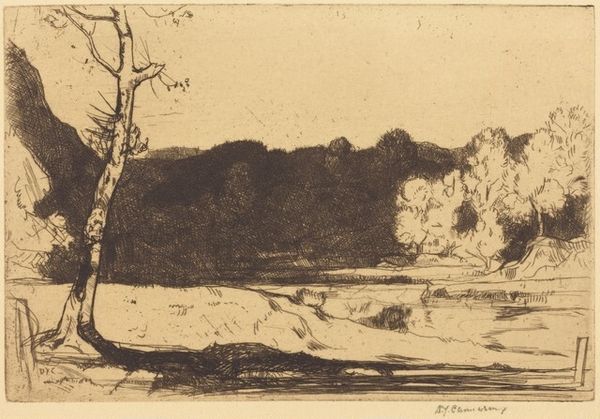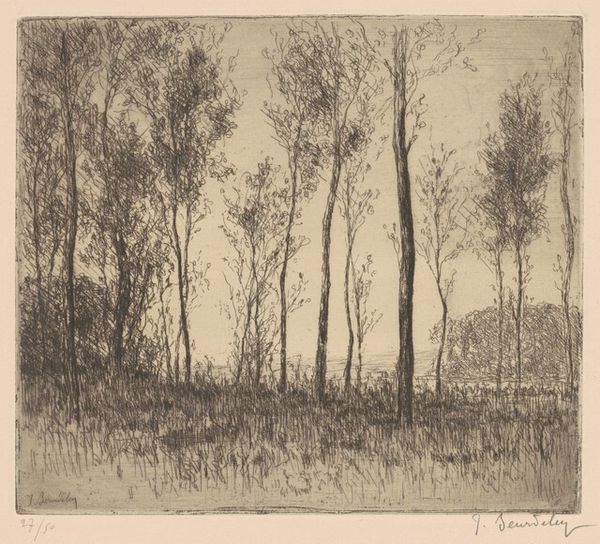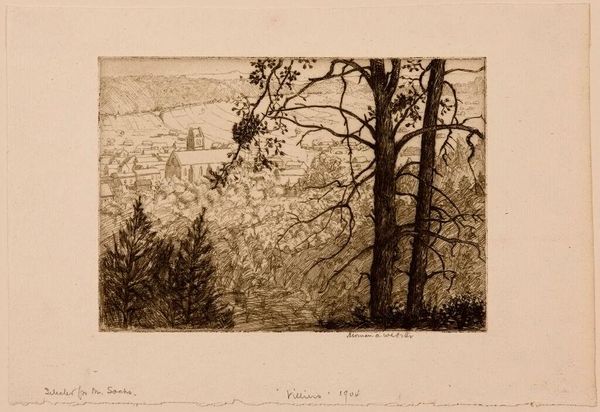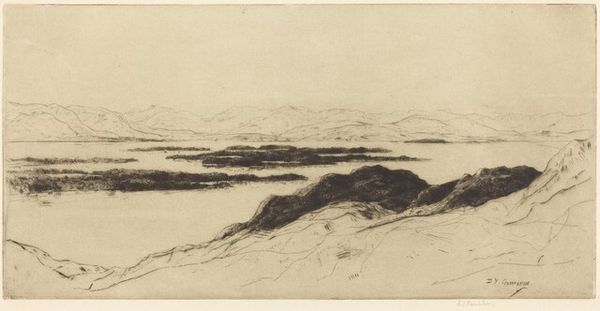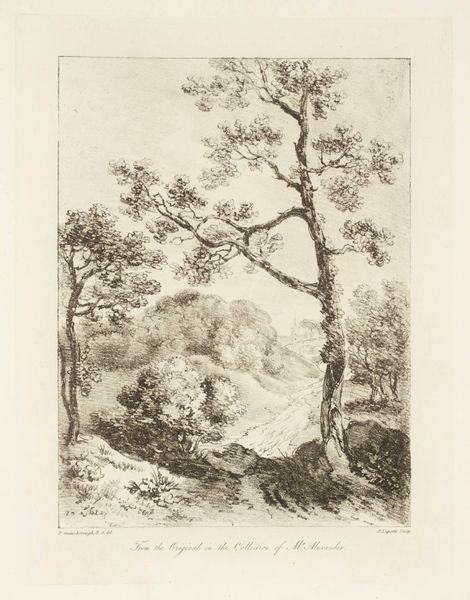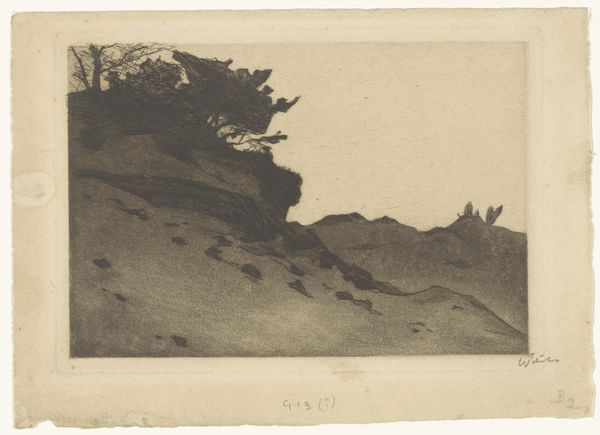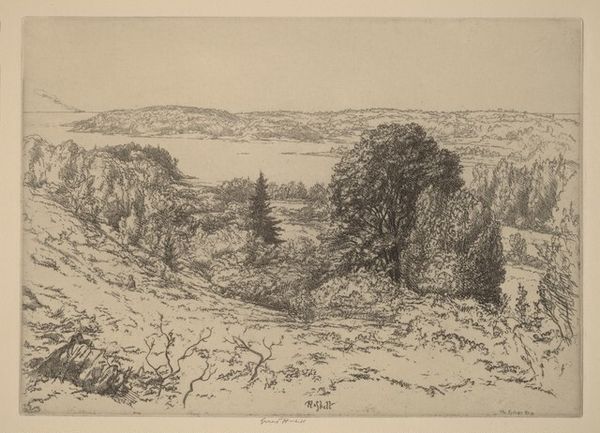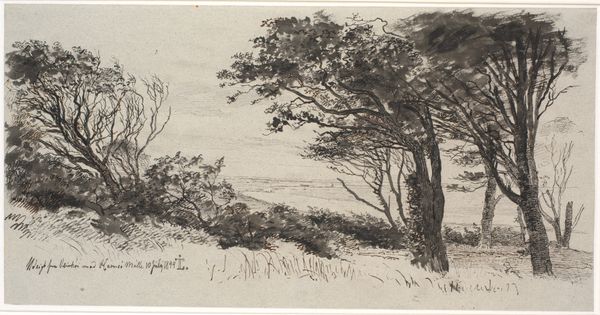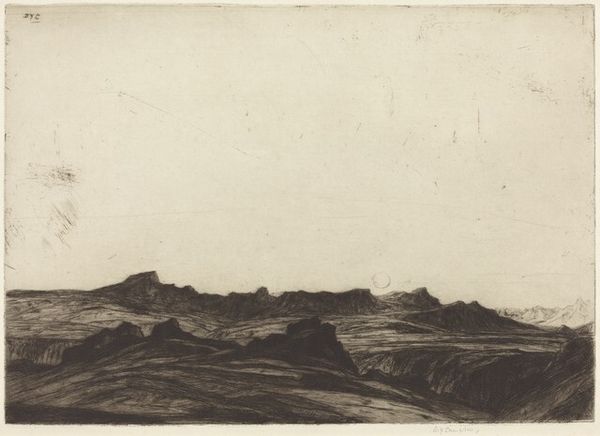
print, etching
# print
#
etching
#
landscape
#
modernism
#
realism
Dimensions: plate: 22.7 × 37.62 cm (8 15/16 × 14 13/16 in.) sheet: 33.18 × 43.82 cm (13 1/16 × 17 1/4 in.)
Copyright: National Gallery of Art: CC0 1.0
Curator: Chauncey Foster Ryder created "Tollhouse Road," an etching, around 1940. What are your first impressions? Editor: A kind of wistful calm. The sparse trees and pale sky create a tranquil but perhaps melancholy scene. It feels like winter, a bit barren, but quietly beautiful. Curator: The skeletal trees certainly evoke a winter atmosphere, drawing upon symbols of seasonal transition and potential rebirth in spring. Etchings like these captured the popular imagination, offering affordable access to artistic landscape imagery. What role might scenes of quiet landscapes play during turbulent historical periods, such as the lead-up to WWII? Editor: Escapism, maybe? There's a focus on nature, a removal from urban and industrial life which could offer solace. Images like this validate a return to simplicity in the face of social change and global conflict. These landscapes became romantic symbols of continuity during those rapidly changing times. Curator: That's interesting. Ryder captures something enduring, even while employing a relatively modern style, rooted in Realism, emphasizing direct observation of nature. It’s devoid of overtly sentimental elements, encouraging instead a more detached, almost objective viewing experience. Editor: And yet, the technique itself, the soft, almost blurred lines of the etching, imbues it with emotion. The symbolism, beyond the obvious trees, gets translated into mood and that mood is what remains with the viewer, beyond the immediate recognition of ‘landscape.’ Did exhibiting these scenes allow institutions to highlight traditional, stable iconography during less certain times? Curator: It is conceivable, presenting an artistic connection to idealized and somewhat unchanging cultural roots. And, beyond specific symbolic readings, landscapes offer a universal visual language, understandable regardless of background. The trees against that quiet sky... It resonates still. Editor: I agree. This exploration into the visual memory encoded in simple scenes gives pause to larger implications, not merely escapism. It is the embodiment of place in history.
Comments
No comments
Be the first to comment and join the conversation on the ultimate creative platform.
